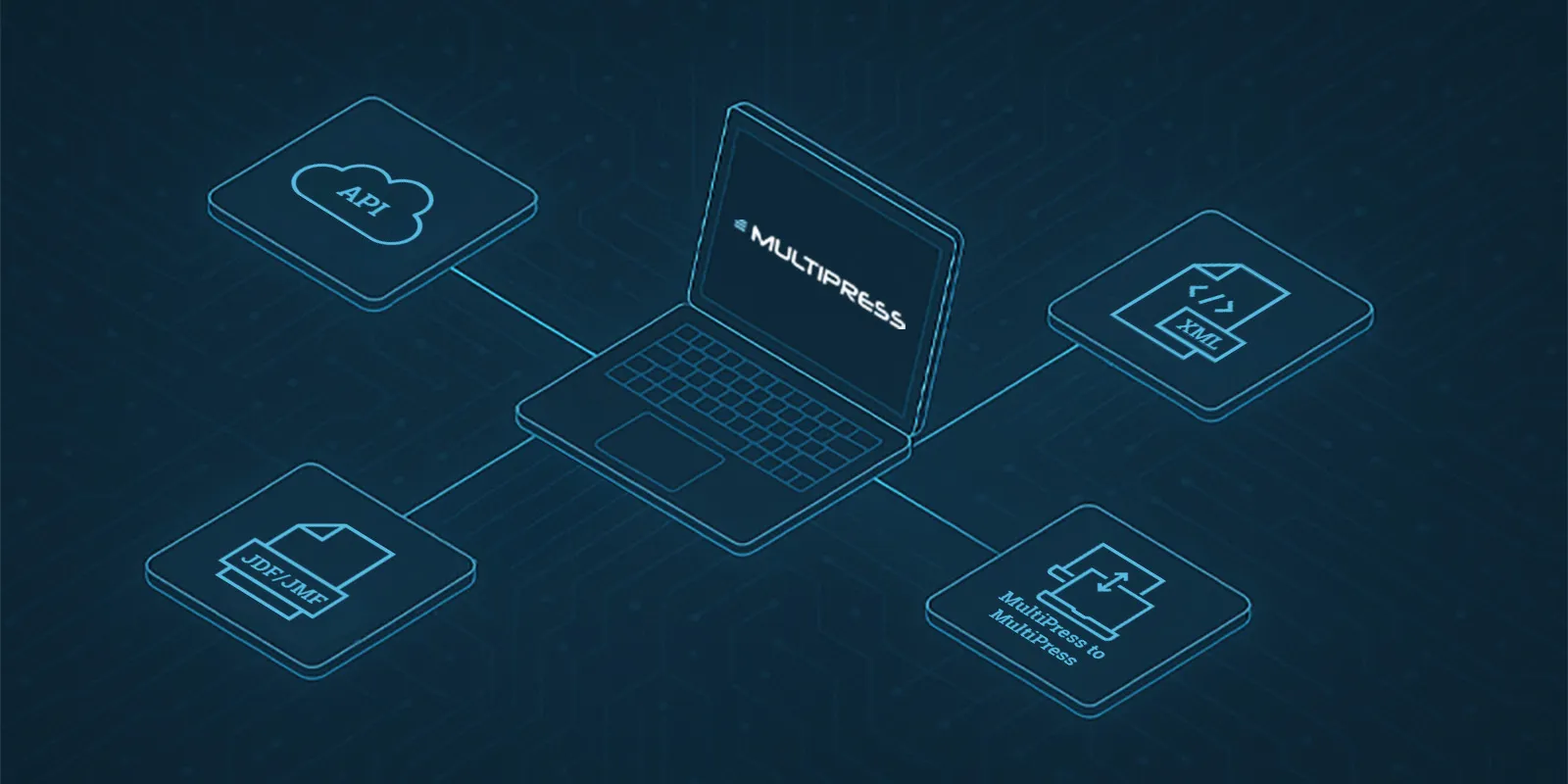From chaos to control: the automations that make the difference for your print business
28 April 2025

Automation may sound a bit abstract, with terms like XML, API or JDF, but it’s essential for every print, sign and large format business today. What you may not know: up to 40% of the cost of a print job goes to administration. By connecting your systems and placing your Management Information System (MIS) at the centre, you eliminate duplicate data entry, reduce errors and cut unnecessary costs. In this blog, you’ll discover how automation, tailored to your needs and powered by the right integrations, can futureproof your workflow.
Why print companies need automation
Many production companies still struggle with fragmented workflows. Orders are entered manually, Excel files are scattered across teams, and communication often runs through email, or even paper forms. The result? Errors, delays and frustration, both internally and for your customers.
By digitising and automating your processes, you bring structure, speed and reliability into your organisation. Think of:
- Automatic order processing (e.g. from webshops)
- Smart scheduling tools with real-time data
- Fewer manual tasks, fewer errors
- Better tracking, communication and control
The result? Less administration, fewer mistakes and lower costs. In the average print company, administration accounts for up to 40% of the cost of a print job. By automating processes and connecting systems, from quote to delivery, you eliminate overhead. You cut unnecessary steps, remove duplicate data entry and reduce staffing costs. That means your cost per job goes down, and your margin goes up.
Let’s not forget: Industry 4.0 is taking hold in the print sector as well. Think IoT sensors and real-time data analytics that closely monitor production. That translates into greater planning control, less downtime, and higher delivery reliability.
The MIS as the beating heart of your workflow
In an ideal workflow, every department, from sales to production to invoicing, works with the same up-to-date information. That’s where the Management Information System (MIS) comes in. It acts as the single source of truth for your organisation, ensuring all teams have access to the right data.
The benefits are clear:
- No more duplicate data entry
- Smoother communication between departments
- Accurate pre- and post-calculations
- Faster invoicing and reliable reporting
- Clear insights into capacity, inventory, costs and profit
But: an MIS alone is not enough. It only reaches its full potential when it’s fully integrated with your other systems and machines. So how do you make that happen?
Industry standards for integration: JDF, JMF and APIs
To enable seamless communication between your machines, software and administration, you need shared standards. JDF and JMF are long-standing industry standards based on XML (eXtensible Markup Language). Since 2004, Dataline has worked with partners such as GWG to enable advanced automation using JDF/JMF integrations in prepress workflows, from conventional to digital and large format machines, including finishing systems. Dataline is also an active member of CIP4, the organisation that oversees JDF alignment.
JDF (Job Definition Format)
JDF is an XML-based format that holds all the technical information of a print job, from paper type and print run to finishing. MultiPress generates JDF files automatically and sends them directly to your printers or cutting machines. No more manual production handovers.
JMF (Job Messaging Format)
JMF adds real-time communication to JDF. You get live updates on each job’s status. Is everything running smoothly? Is there a delay? This allows you to react quickly or adjust your planning. The production process also feeds information back into your MIS automatically, ensuring accurate post-calculations.
API (Application Programming Interface)
An API is a technical link between two software applications. MultiPress includes a powerful API, which has already enabled dozens of successful integrations. Thanks to this API, MultiPress can connect easily to other software tools in your business, from e-commerce and accounting to logistics.
Examples include:
- Magento web-to-print shop
- nShift or Bumbal for shipping
- Accounting tools like Scan Sys
- MultiPress-to-MultiPress integration with partner print companies
Creating one seamless workflow
A strong MIS is only effective if it’s not an island. True efficiency gains happen when your MIS seamlessly connects with the rest of your workflow, from prepress software and ERP to web-to-print platforms.
Dataline follows a proven strategy of certified integrations with all essential hardware and software components used in modern print production. This includes prepress, workflow optimisation, e-business platforms, logistics and transport, substrate and paper databases, and accounting systems. Think Canon Prisma, Agfa Asanti, Kodak Prinergy, Screen Equios, Heidelberg and Komori presses.
When integrating systems into your MIS, keep these principles in mind:
- Use open standards: JDF and JMF let your MIS communicate directly with your machines and software. No more manual handoffs, no more double work.
- Ensure real-time data exchange: All departments should have immediate access to up-to-date info, enabling faster decisions, better planning and proactive customer service.
- Prioritise usability: Automation should make work easier, not more complex. Choose systems that are intuitive and easy to use, that’s how you get your team on board.
- Think scalability: As your company grows, more customers, extra locations, new services, your MIS must scale with you. Choose a platform that evolves with your ambition.
Conclusion: build the workflow of tomorrow, today
The future of print production is integrated, automated and data-driven. Most companies already use software for administration or job tracking, but that’s only the beginning. If you truly want to accelerate, you need to connect that software with your production and other core processes.
And that’s only possible with a modern, complete and innovative platform that brings everything together. With MultiPress, and its robust integrations via API, JDF and JMF, you create the foundation for a workflow built for tomorrow. Just ask companies like Group Joos, who prove every day what it can deliver: fewer errors, more control, and lower costs.
Automation doesn’t mean starting over. It means working smarter. And you can start today.